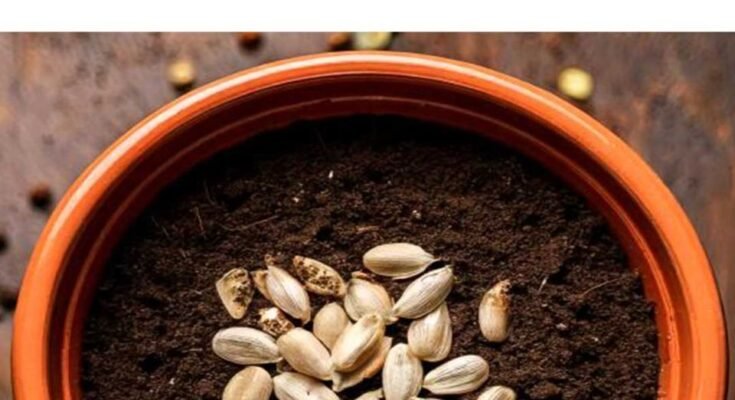|
Growing a lemon tree from seed is a rewarding and educational experience that allows you to witness the entire life cycle of a plant. While it requires patience and care, the process is straightforward and can be done with materials you likely already have at home. Whether you’re looking to add a citrusy touch to your garden or simply want to try your hand at growing something new, starting a lemon tree from seed is a great project for gardeners of all levels.
Benefits of Growing Your Own Lemon Tree
There are numerous benefits to growing your own lemon tree. Not only do you get to enjoy fresh, organic lemons right from your backyard, but lemon trees also add aesthetic value to your home with their lush green leaves and fragrant blossoms. Additionally, lemon trees can improve air quality and provide shade. For those interested in sustainability, growing your own fruit reduces the carbon footprint associated with transporting store-bought produce.
Advertisement
Selecting the Right Lemon for Seed Harvesting
To start your lemon tree, it’s crucial to select the right lemon. Opt for an organic lemon, as non-organic lemons may have been treated with chemicals that can inhibit seed germination. Look for a lemon that is ripe, firm, and free of blemishes. This ensures that the seeds inside are mature and viable for planting.
How to Extract and Prepare Lemon Seeds for Planting
Begin by cutting the lemon in half and removing the seeds. Rinse the seeds thoroughly to remove any pulp or sugar that might encourage mold growth. Once cleaned, soak the seeds in water for a few hours. This helps to soften the seed coat and can improve germination rates. After soaking, gently dry the seeds with a paper towel.
The Germination Process: Getting Your Seeds to Sprout
To germinate lemon seeds, place them in a damp paper towel and fold it over. Store the paper towel in a plastic bag or container to maintain humidity, and place it in a warm, dark location. Check the seeds periodically, ensuring the towel remains moist. Within two to three weeks, you should see small sprouts emerging from the seeds.
Choosing the Ideal Soil and Pot for Your Lemon Seedlings
Once your seeds have sprouted, it’s time to plant them in soil. Use a well-draining potting mix, ideally one formulated for citrus plants. Choose a small pot with drainage holes to prevent waterlogging. Plant the sprouted seeds about half an inch deep in the soil and water them lightly.
Proper Watering Techniques for Young Lemon Trees
Young lemon trees require consistent moisture but should not be overwatered. Water the seedlings when the top inch of soil feels dry to the touch. Ensure that excess water can drain away to prevent root rot. As the tree grows, adjust your watering schedule to accommodate its increasing size and water needs.
Ensuring Adequate Sunlight and Temperature Conditions
Lemon trees thrive in warm, sunny environments. Place your seedlings in a location where they can receive at least 8 hours of sunlight per day. If growing indoors, a south-facing window is ideal. Maintain a temperature range of 70-85°F for optimal growth. During colder months, consider using a grow light to supplement natural sunlight.
Transplanting Seedlings to Larger Pots or Outdoors
As your lemon tree grows, it will need more space. Transplant the seedlings to larger pots once they outgrow their current containers. If you live in a suitable climate, you can also plant them outdoors. Choose a sunny spot with well-draining soil, and ensure the tree is protected from strong winds.
Common Mistakes to Avoid When Growing Lemon Trees
Avoid common pitfalls such as overwatering, which can lead to root rot, and underestimating the tree’s need for sunlight. Additionally, be cautious of using non-organic lemons for seeds, as they may not germinate. Ensure your tree has adequate space to grow, both in terms of pot size and planting location.
Pest and Disease Management for Healthy Lemon Trees
Lemon trees can be susceptible to pests like aphids, spider mites, and scale. Regularly inspect your tree for signs of infestation and treat with insecticidal soap or neem oil if necessary. To prevent disease, ensure proper air circulation around the tree and avoid overwatering, which can lead to fungal issues.
Pruning and Maintenance Tips for Optimal Growth
Pruning is essential for maintaining the shape and health of your lemon tree. Remove any dead or diseased branches, and thin out crowded areas to improve air circulation. Prune in early spring before new growth begins. Regular maintenance also includes fertilizing with a balanced citrus fertilizer to support healthy growth.
When and How to Harvest Lemons from Your Tree
Lemons typically take several months to mature. They are ready to harvest when they have a bright yellow color and a slight give when gently squeezed. Use pruning shears to cut the fruit from the tree, leaving a small stem attached. Harvesting regularly encourages the tree to produce more fruit.
Conclusion: Enjoying the Fruits of Your Labor
Growing a lemon tree from seed is a fulfilling journey that culminates in the joy of harvesting your own lemons. Whether you use them for cooking, baking, or simply enjoying their fresh scent, the fruits of your labor will be well worth the effort. With patience and care, your lemon tree can provide years of enjoyment and a bountiful supply of citrus.
|
I seriously didn’t know you could do this




